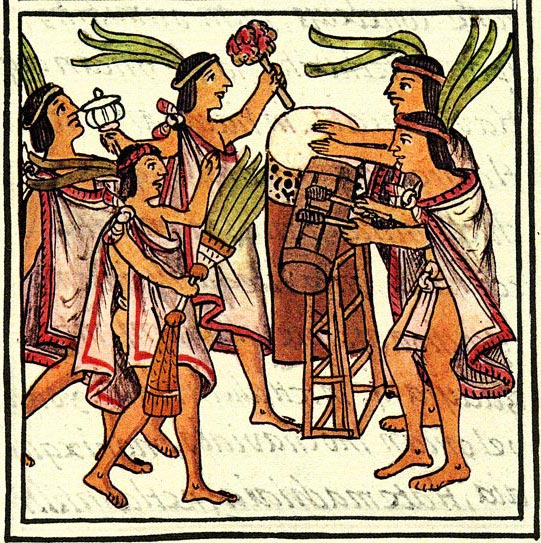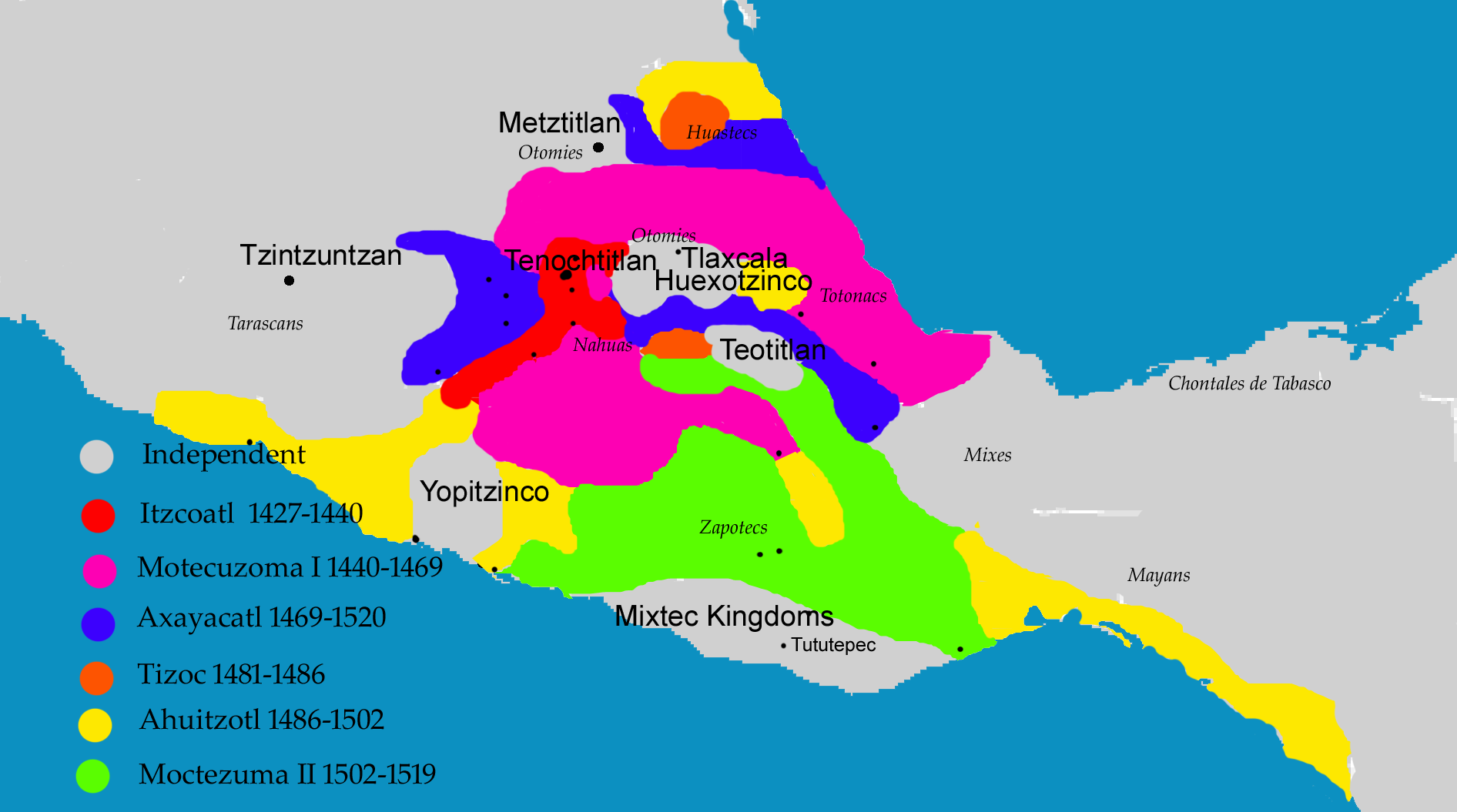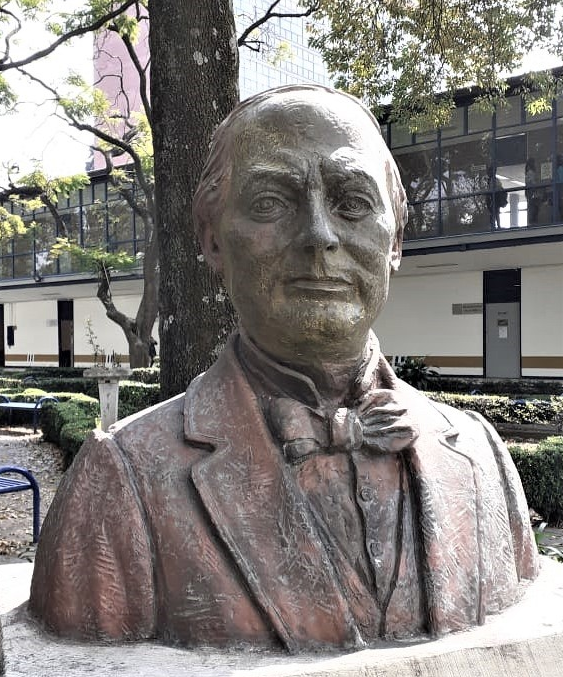|
Toluca, Mexico
Toluca , officially Toluca de Lerdo , is the state capital of the State of Mexico as well as the seat of the Municipality of Toluca. With a population of 910,608 as of the 2020 census, Toluca is the fifth most populous city in Mexico. The city forms the core of the Greater Toluca metropolitan area, which with a combined population of 2,347,692 forms the fifth most populous metropolitan area in the country. Located southwest of Mexico City, the city's rapid growth stems largely from its proximity to the capital. Etymology When Toluca was founded by the Matlatzincas, its original name was ''Nepintahihui'' (land of corn). The current name is based on the Náhuatl name for the area when it was renamed by the Aztecs in 1473. The name has its origin in the word ''tollocan'' that comes from the name of the god, ''Tolo'', plus the locative suffix, ''can'', to denote "place of Tolo". It is also referred to in a number of Aztec codices as ''Tolutépetl'', meaning hill of the god, Tolo, ... [...More Info...] [...Related Items...] OR: [Wikipedia] [Google] [Baidu] |
List Of Sovereign States
The following is a list providing an overview of sovereign states around the world with information on their status and recognition of their sovereignty. The 206 listed states can be divided into three categories based on membership within the United Nations System: 193 UN member states, 2 UN General Assembly non-member observer states, and 11 other states. The ''sovereignty dispute'' column indicates states having undisputed sovereignty (188 states, of which there are 187 UN member states and 1 UN General Assembly non-member observer state), states having disputed sovereignty (16 states, of which there are 6 UN member states, 1 UN General Assembly non-member observer state, and 9 de facto states), and states having a special political status (2 states, both in free association with New Zealand). Compiling a list such as this can be a complicated and controversial process, as there is no definition that is binding on all the members of the community of nations concerni ... [...More Info...] [...Related Items...] OR: [Wikipedia] [Google] [Baidu] |
Náhuatl
Nahuatl (; ), Aztec, or Mexicano is a language or, by some definitions, a group of languages of the Uto-Aztecan language family. Varieties of Nahuatl are spoken by about Nahua peoples, most of whom live mainly in Central Mexico and have smaller populations in the United States. Nahuatl has been spoken in central Mexico since at least the seventh century CE. It was the language of the Aztec/Mexica, who dominated what is now central Mexico during the Late Postclassic period of Mesoamerican history. During the centuries preceding the Spanish and Tlaxcalan conquest of the Aztec Empire, the Aztecs had expanded to incorporate a large part of central Mexico. Their influence caused the variety of Nahuatl spoken by the residents of Tenochtitlan to become a prestige language in Mesoamerica. After the conquest, when Spanish colonists and missionaries introduced the Latin alphabet, Nahuatl also became a literary language. Many chronicles, grammars, works of poetry, administrative docume ... [...More Info...] [...Related Items...] OR: [Wikipedia] [Google] [Baidu] |
Mexica
The Mexica (Nahuatl: , ;''Nahuatl Dictionary.'' (1990). Wired Humanities Project. University of Oregon. Retrieved August 29, 2012, frolink/ref> singular ) were a Nahuatl-speaking indigenous people of the Valley of Mexico who were the rulers of the Aztec Empire. The Mexica established Tenochtitlan, a settlement on an island in Lake Texcoco, in 1325. A dissident group in Tenochtitlan separated and founded the settlement of Tlatelolco with its own dynastic lineage. In 1521, they were conquered by an alliance of Spanish conquistadors and indigenous people including the Tlaxcaltecs led by Hernán Cortés. Names The ''Mexica'' are eponymous of the place name Mexico (''Mēxihco'' ), originally referring to the interconnected settlements in the valley that is now Mexico City. The group was also known as the Culhua-Mexica in recognition of its kinship alliance with the neighboring Culhua, descendants of the revered Toltecs, who occupied the Toltec capital of Tula from the 10th to ... [...More Info...] [...Related Items...] OR: [Wikipedia] [Google] [Baidu] |
Calixtlahuaca
Calixtlahuaca (from the Nahuatl, where calli means "house", and ixtlahuatl means "prairie" or "plains", hence the translation would be "plains-house-place") is a Postclassic period Mesoamerican archaeological site, located near the present-day city of Toluca in the State of Mexico. Known originally as "Matlatzinco", this urban settlement was a powerful capital whose kings controlled a large territory in the Toluca Valley. Background Archaeologist José García Payón excavated the monumental architecture at Calixtlahuaca in the 1930s and restored a number of temples and other buildings. Most notable are Structure 3, a circular temple dedicated to the Aztec wind god Ehecatl, and Structure 17, a large royal “palace”. The architecture and stone sculpture at the site is similar to that of other Middle to Late Postclassic period (AD 1100-1520) Aztec sites in central Mexico. In 1930, the preserved area of site had an extension of 144 hectares, today it only has 116. Between 19 ... [...More Info...] [...Related Items...] OR: [Wikipedia] [Google] [Baidu] |
Mesoamerica
Mesoamerica is a historical region and cultural area in southern North America and most of Central America. It extends from approximately central Mexico through Belize, Guatemala, El Salvador, Honduras, Nicaragua, and northern Costa Rica. Within this region pre-Columbian societies flourished for more than 3,000 years before the Spanish colonization of the Americas. Mesoamerica was the site of two of the most profound historical transformations in world history: primary urban generation, and the formation of New World cultures out of the long encounters among indigenous, European, African and Asian cultures. In the 16th century, Eurasian diseases such as smallpox and measles, which were endemic among the colonists but new to North America, caused the deaths of upwards of 90% of the indigenous people, resulting in great losses to their societies and cultures. Mesoamerica is one of the five areas in the world where ancient civilization arose independently (see cradle of civ ... [...More Info...] [...Related Items...] OR: [Wikipedia] [Google] [Baidu] |
Nahua Peoples
The Nahuas () are a group of the indigenous people of Mexico, El Salvador, Guatemala, Honduras, and Nicaragua. They comprise the largest indigenous group in Mexico and second largest in El Salvador. The Mexica (Aztecs) were of Nahua ethnicity, and the Toltecs are often thought to have been as well, though in the pre-Columbian period Nahuas were subdivided into many groups that did not necessarily share a common identity. Their Nahuan languages, or Nahuatl, consist of many variants, several of which are mutually unintelligible. About 1.5 million Nahuas speak Nahuatl and another million speak only Spanish. Fewer than 1,000 native speakers of Nahuatl remain in El Salvador. It is suggested that the Nahua peoples originated near Aridoamerica, in regions of the present day Mexican states of Durango and Nayarit or the Bajío region. They split off from the other Uto-Aztecan speaking peoples and migrated into central Mexico around 500 CE. The Nahua then settled in and around the Basin ... [...More Info...] [...Related Items...] OR: [Wikipedia] [Google] [Baidu] |
Mazahua Language
The Mazahua language ( maz, Jñatrjo) is an Oto-Pamean language spoken in the central states of Mexico by the ethnic group that is widely known as the Mazahua but calls itself the Hñatho. It is a Mesoamerican language and has many of the traits of the Mesoamerican Linguistic Area. In 2003, along with some 62 other indigenous languages, it was recognised by a statutory law of Mexico ( General Law of Linguistic Rights of the Indigenous Peoples) as an official language in the Federal District and the other administrative divisions in which it is spoken, and on an equal footing with Spanish. The largest concentration of Mazahua is found in the municipality of San Felipe del Progreso, State of México, near Toluca. The closest relatives of the Mazahua language are Otomi, Matlatzinca, and Ocuilteco/Tlahuica languages, which together with Mazahua form the Otomian subgroup of the Oto-Pamean branch of the Oto-Manguean language family. Mazahua is a tonal language and distinguishes h ... [...More Info...] [...Related Items...] OR: [Wikipedia] [Google] [Baidu] |
Otomi Language
Otomi (; ) is an Oto-Pamean languages, Oto-Pamean language family spoken by approximately 240,000 indigenous Otomi people in the Mexican Plateau, central ''altiplano'' region of Mexico. Otomi consists of several closely related languages, many of which are not mutually intelligible. The word ''Hñähñu'' has been proposed as an endonym, but since it represents the usage of a single dialect, it has not gained wide currency. Linguists have classified the modern dialects into three dialect areas: the Northwestern dialects are spoken in Querétaro, Hidalgo (state), Hidalgo and Guanajuato; the Southwestern dialects are spoken in the Mexico (state), State of Mexico; and the Eastern dialects are spoken in the highlands of Veracruz, Puebla, and eastern Hidalgo and villages in Tlaxcala and Mexico states. Like all other Oto-Manguean languages, Otomi is a tonal language, and most varieties distinguish three tones. Nouns are marked only for possessor; the plural number is marked with a d ... [...More Info...] [...Related Items...] OR: [Wikipedia] [Google] [Baidu] |
Matlatzinca Language
Matlatzinca, or more specifically San Francisco Matlatzinca, is an endangered Oto-Manguean language of Central Mexico. The name of the language in the language itself is ''pjiekak'joo''. In 2020 Matlatzinca was spoken by around 1,200 persons. At any one time, about half the population is in the village of San Francisco Oxtotilpan San Francisco Oxtotilpan is a village in located in the municipality of Temascaltepec in the state of Mexico, Mexico Mexico (Spanish language, Spanish: México), officially the United Mexican States, is a List of sovereign states, country in ... and half away in Mexico City.Palancar, Enrique L. 2016. Oto-Pamean/ref> Notes {{Oto-Manguean languages Indigenous languages of Mexico Mesoamerican languages Matlatzinca Matlatzinca Matlatzinca ... [...More Info...] [...Related Items...] OR: [Wikipedia] [Google] [Baidu] |
Axayacatl
Axayacatl (; nci, āxāyacatl ; es, Axayácatl ; meaning "face of water"; –1481) was the sixth of the of Tenochtitlan and Emperor of the Aztec Triple Alliance. Biography Early life and background Axayacatl was a son of the princess Atotoztli II and her cousin, prince Tezozomoc. He was a grandson of the Emperors Moctezuma I and Itzcoatl. He was a descendant of the king Cuauhtototzin. He was a successor of Moctezuma and his brothers were Emperors Tizoc and Ahuitzotl and his sister was the Queen Chalchiuhnenetzin. He was an uncle of the Emperor Cuauhtémoc and father of Emperors Moctezuma II and Cuitláhuac. Rise to power During his youth, his military prowess gained him the favor influential figures such as Nezahualcoyotl and Tlacaelel I, and thus, upon the death of Moctezuma I in 1469, he was chosen to ascend to the throne, much to the displeasure of his two older brothers, Tizoc and Ahuitzotl. It is also important that the Great Sun Stone, also known as the Aztec Cal ... [...More Info...] [...Related Items...] OR: [Wikipedia] [Google] [Baidu] |
Sebastián Lerdo De Tejada
Sebastián Lerdo de Tejada y Corral (; 24 April 1823 – 21 April 1889) was Mexican liberal politician and jurist who served as the 27th president of Mexico from 1872 to 1876. A successor to Benito Juárez, who died in office in July 1872, Lerdo de Tejada was elected to his own presidential term in November 1872. Previously, he served as Chief Justice of the Supreme Court. Juárez's political rival, liberal General Porfirio Díaz, had attempted a coup against Juárez, but his Plan de la Noria failed and Díaz was eliminated as a political rival during Lerdo de Tejada's 1872–1876 term, giving him considerable leeway to pursue his program without political interference. During his term, he succeeded in pacifying the country after decades of political unrest and strengthening the Mexican state. He was elected for another term in 1876, but was overthrown by Porfirio Díaz and his supporters under the Plan of Tuxtepec, which asserted the principle of no-reelection to the presidenc ... [...More Info...] [...Related Items...] OR: [Wikipedia] [Google] [Baidu] |
Mexican President
The president of Mexico ( es, link=no, Presidente de México), officially the president of the United Mexican States ( es, link=no, Presidente de los Estados Unidos Mexicanos), is the head of state and head of government of Mexico. Under the Constitution of Mexico, the president heads the executive branch of the federal government and is the commander-in-chief of the Mexican Armed Forces. The current president is Andrés Manuel López Obrador, who took office on 1 December 2018. The office of the president is considered to be revolutionary, in the sense that the powers of office are derived from the Revolutionary Constitution of 1917. Another legacy of the Mexican Revolution is the Constitution's ban on re-election. Mexican presidents are limited to a single six-year term, called a '' sexenio''. No one who has held the post, even on a caretaker basis, is allowed to run or serve again. The constitution and the office of the president closely follow the presidential system of gov ... [...More Info...] [...Related Items...] OR: [Wikipedia] [Google] [Baidu] |



